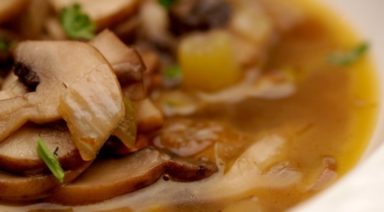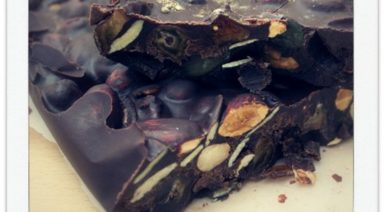Eat Your Way to a Healthy Complexion

It’s been said “you are what you eat,” and far from being a poetic platitude, this timeless trope is literally true! Not only do the micro-nutrients in food, including vitamins, minerals, enzymes and phytonutrients allow biochemistry to proceed properly, but the building blocks of the proteins, fats and carbohydrates that we ingest, ultimately become our bones, blood, muscles, and all the other tissues and organs that make up our miraculous and marvelous human bodies. This of course includes the body’s largest organ, the skin, and there is no way to get around the fact that eating poor quality foods will show up as poor-quality complexion.
While this seems like an obvious truth, it isn’t something most of us account for when we decide what to eat. And the unfortunate results are pretty much all skin-health conditions from acne and accelerated aging to dryness and dark spots.
Foods that are overly heated and highly processed are deficient in enzymes and nutrients, negatively impacting the skin and acting as the source of pretty much all cutaneous concerns including eczema, rosacea, and psoriasis. Even seemingly external dermatological problems like allergic reactions and sun damage can at least partially be the result of poor food choices.
On the other hand, enjoying high-quality foods not only helps slow down aging and prevent full-blown skin health challenges, but can also be the source of healthy, beautiful, glowing skin. Sure, topical skin care is important, but at the end of the day the skin, like any other part of the body, is composed of what we consume. I recommend including foods with phytonutrients, essential fatty acids, protein, antioxidants, vitamins, and minerals in your daily meal plan.
The 13 Foods for a Healthy Complexion
Here’s a list of 13 of my favorite skin health foods. Make each one a regular part of your diet and you can eat your way to good skin!
1.) Fatty Fish (salmon, tuna, sardines) – Loaded with Omega-3 fatty acids to help improve inflammatory skin diseases like eczema and psoriasis, plus is a great source of protein. Make sure to eat the skin; it’s not only delicious but it’s also one of nature’s best sources of skin cell friendly vitamin D.
2.) Bone Broth – Great source of collagen and hyaluronic acid, two of the most important skin building molecules. While they won’t do much to promote skin cell health when applied topically when eaten these two nutritional powerhouses may help prevent much of the thinning and wrinkling associated with skin aging.
3.) Avocado – Delicious delivery of Omega-6 fatty acid for prevention of skin dryness. This popular fruit (yes, avocados are a fruit!) also contains a generous amount of vitamin C, as well as protein and vitamin A for collagen and connective tissue building and repair.
4.) Eggs – Nature’s most nutrient dense foods, contains EFAs for skin healing and moisturization, B-vitamins to energize skin cell growth, vitamin A for improved production of skin fats and anti-acne and collagen building minerals like zinc and sulfur.
5.) Organ Meats – Protein-packed building food that contains all the raw materials including cholesterol, phospholipids, vitamin A and minerals like iron, zinc, selenium, and sulfur for construction of new skin cells and tissue.
6.) Walnuts – antioxidant packed power-nut, vitamin E and polyphenols make this food particularly helpful as a natural skin sun protectant. Omega 3 fats provide anti-inflammatory benefits and collagen building copper keeps wrinkles and fine lines at bay.
7.) Garlic – Allicin, the most powerful component of this stinky but popular vegetable, has well known anti-fungal and anti-microbial properties. Also, contains complex sugars that help build connective tissue. Antioxidants and minerals like sulfur and selenium support skin health and healing. Garlic skins are an especially good source of anti-aging nutrients; add them to boiling water to make a savory, skin health tea.
8.) Pigmented Veggies (green, red, blue, yellow, orange) – pigments are delivered to the skin from the blood where they act as natural sun protectants. Use steamed with butter to maximize absorption. Veggies also contain fiber and nitrogen for digestive and skin health, as well as a host of micronutrients to support skin cell chemistry.
9.) Flax Seeds – One of nature’s best sources of skin soothing Omega-3 fatty acids. Also, a great source of blood and digestive tract cleansing fiber. Phytoestrogens support skin softness and anti-aging. Flax seeds are also a great source of skin-building protein.
10.) Aloe Vera Gel – Phytosterols and polysaccharides enhance skin healing and reduce skin inflammation, a source of 20 amino acids, as well as glucosamine for hyaluronic acid and connective tissue synthesis, soluble fiber supports detoxification and a wide spectrum of minerals, including zinc, copper, chromium, and calcium provide overall skin health benefits.
11.) Papaya – contains enzymes for digestive support and reduced inflammation, and improved healing of bruises, burns and post-surgical trauma. Loaded with vitamin C for collagen and connective tissue production, and also contains sun protecting carotenoids.
12.) Citrus Fruit (lemon and oranges) – Vitamin C loaded powerhouse, packed with antioxidant and UV protection phytonutrients. Fiber enhances digestion and detoxification. High concentrations of B vitamins and Eaectrolytes support skin cell energy, activity, and development.
13.) Blueberries – One of three fruits native to North America (along with Concord grapes and cranberries), when it comes to food value, the humble little blueberry’s diminutive dimensions can be misleading. Despite its tiny size, these little berries, on average about .3 inches in diameter, pack a powerful nutritional punch. They’re loaded with digestion supporting fiber, vitamins C and E for beautiful skin and robust immunity and they even have hard-to-find vitamin K1 for healthy blood and bones. And, blueberries are a great source of anthocyanin a purple pigment that is one of nature’s best anti-oxidants
….and, that’s The Truth!
Health Benefits of Castor Oil Packs: What You Need to Know

Castor oil packs have been used for centuries as a natural remedy to support overall wellness. Countless people use them for pain relief, skin health, and even to support liver function. Simply soaking a cloth in castor oil and applying it to the skin, these packs are believed to help with detoxification, reduce inflammation, and promote better digestion. While castor oil packs are a relatively simple and gentle healing tool, understanding their proper use is essential to maximizing benefits and minimizing potential side effects.
What is Castor Oil?
Extracted from the seeds of the Ricinus communis plant, castor oil has been valued for centuries across various cultures for its medicinal and industrial applications. This castor plant, native to Africa, India, and the Mediterranean region, has become one of the world’s oldest cultivated crops. The oil pulled from these seeds is rich in ricinoleic acid, a monounsaturated fatty acid believed to be responsible for many of its therapeutic properties.
Historically, castor oil’s use dates back to ancient Egypt, where it was documented in medical papyri around 1550 BCE, primarily as a laxative to relieve constipation. Over time, its applications have diversified:
- Laxative Properties: Castor oil is approved by the Food and Drug Administration (FDA) as a stimulant laxative. It works by stimulating nerves in the gastrointestinal tract and increasing bowel movements, which helps relieve occasional constipation.
- Skin Care: It serves as a moisturizer to treat or prevent dry, rough, scaly, or itchy skin and minor skin irritations.
- Wound Healing: The oil contains antibacterial and antimicrobial properties that may aid in speeding up wound healing, especially when combined with other substances.
- Anti-Inflammatory Properties: Castor oil may help reduce inflammation and possibly improve blood flow of the lymphatic system.
- Hair Care: It’s commonly used in hair products to condition and moisturize hair, promoting hair growth and overall hair health.





































